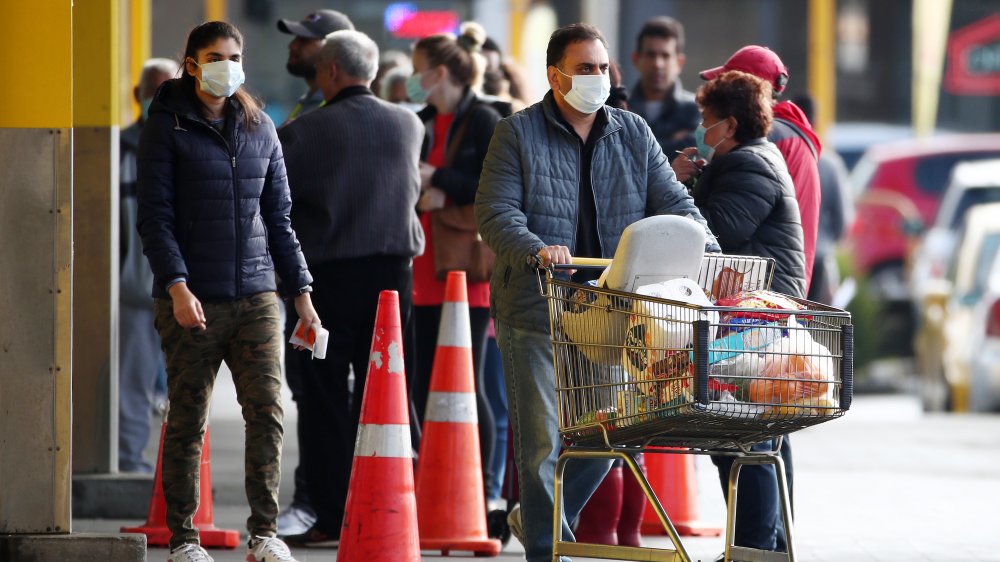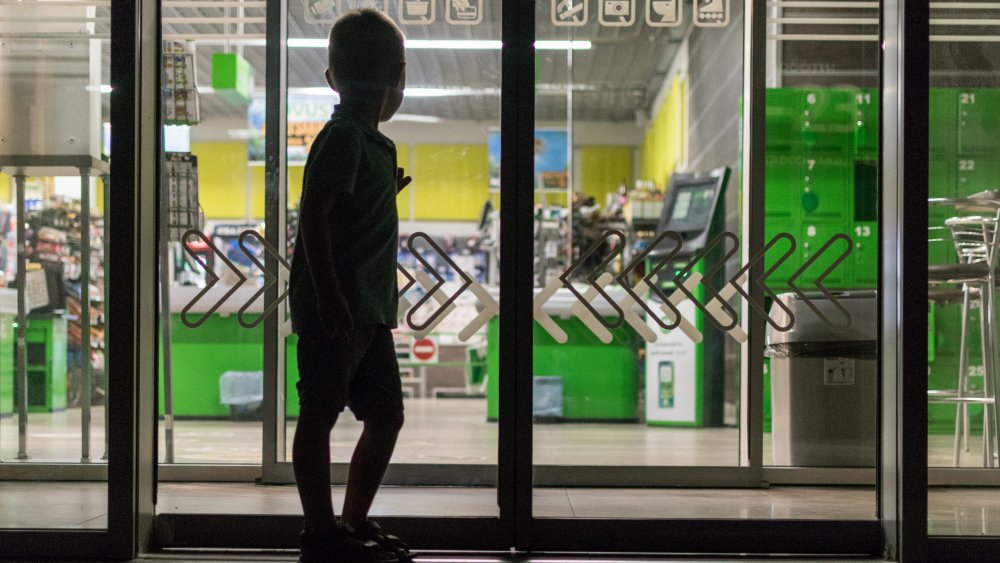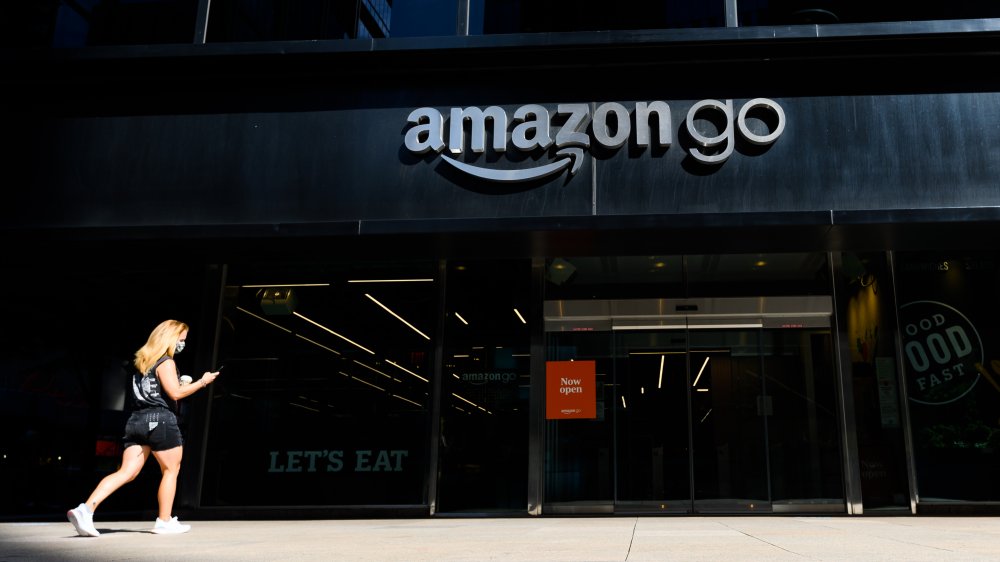Weird Ways The Pandemic Is Changing The Way You Shop
The COVID-19 pandemic has changed our daily routines drastically, and in some cases permanently. One of the places where this has been felt the most is the grocery store. Some of the new trends are about what we're buying. Oranges are more popular, as are frozen meals (via The New York Times). "There are two different reactions to COVID — a small number who are getting health conscious and reacquainting themselves with real food, and a larger group that is going with comfort food that is cheap and shelf-stable," a dean of the the nutrition science school at Tufts University told The Washington Post.
Otherwise, just about all of the changes to our grocery-shopping habits answer the question, "How can we do this without getting sick or putting employees at risk?"
Some of the changes at grocery stores can't go away soon enough. We wait in lines just to get inside the store, due to restrictions on the number of customers allowed in at any one time (via Trader Joe's). Also annoying are the one-way aisles that some stores decided not to keep enforcing because customers were complaining (via The New York Times). Meanwhile, other changes are proving to be so convenient, they will likely stick around after COVID-19 fades.
The pandemic means no free samples and no late-night groceries
Before the pandemic, we took it for granted that we could shop for groceries whenever. Night owls, swing-shift workers heading home from work, and people who needed to restock the White Claw for their late-night house party (remember those?) could rest assured that Walmart and several other grocery stores were open 24 hours. The pandemic has prompted retailers to close each night, to give employees a chance to deep-clean and restock shelves (via NPR). Grocers are also setting aside certain hours exclusively for seniors (via Good Housekeeping). Younger folk have had to schedule their shopping to avoid these times.
Meanwhile, Costco brought samples back to some of its stores in June (via USA Today), but in-store eating doesn't appear to be part of the experience. Photos on Instagram from @Costcoguy4u show prepackaged food items in one sample station, with the same items, cooked and on a plate, displayed inside a glass case. That's probably as good as store samples are going to get for the foreseeable future. "It's not going to be where you go and just pick up an open sample with your fingers," Costco's chief financial officer said (via USA Today).
Look for these grocery-store technologies to stick around
They say necessity is the mother of invention. New technologies are being perfected during the pandemic that will improve grocery shopping in the long run. The biggest example is online ordering and delivery. Just fire up an app, whether it's Instacart, Walmart Plus, Amazon Prime Now, or one of the others, click through your grocery list, and wait an hour or two for the groceries to show up at your door. The system didn't run that smoothly in the early days of the pandemic. Amazon and others had trouble taking orders, much less delivering them in timely fashion (via Money). Since then, Instacart hired 300,000 new shoppers in one month (via CNN), Amazon opened "dark" Whole Foods stores strictly for online ordering — and a lot of the early problems appear to have been resolved. That's good, because grocery delivery isn't going away. Now, 37.5 million households put in regular delivery orders for groceries, up from 16.1 million a year ago (via The Spoon).
Inside stores things are changing too. For instance, a small L.A. chain has set up a single line that feeds into all cashiers, improving wait times and helping people avoid crowds (via Los Angeles Daily News). And talk about "contact-free." Amazon Go stores introduced customers to Just Walk Out technology, which allows shoppers to grab items from the shelves, walk out, and trust that their Amazon account will be billed accurately.


